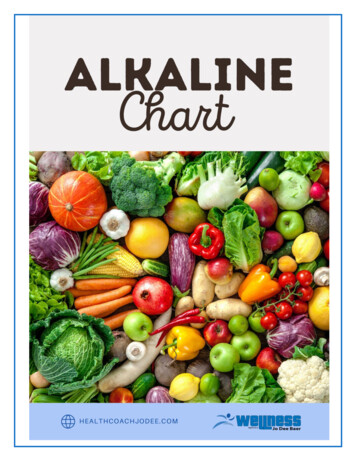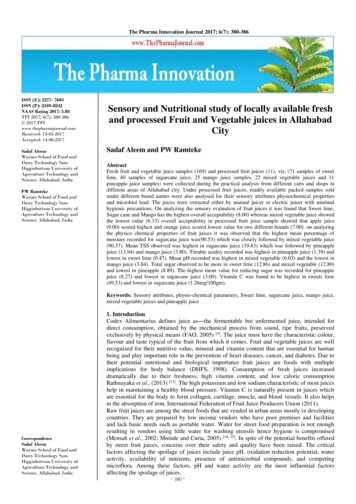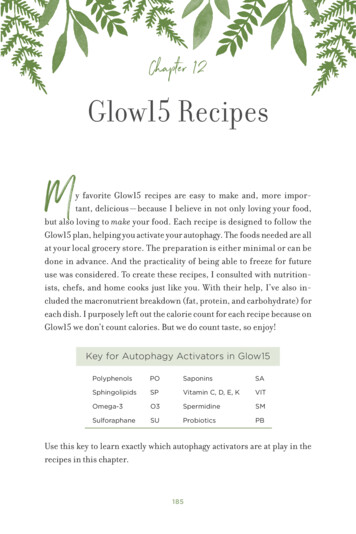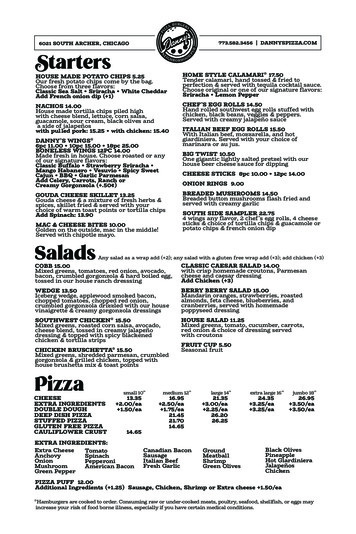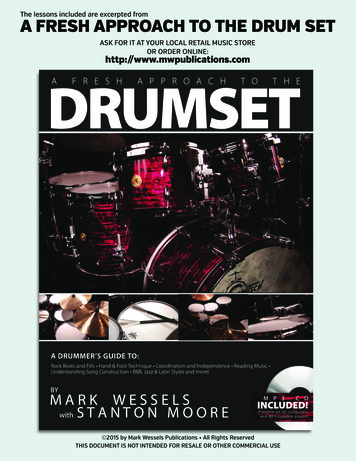
Transcription
The lessons included are excerpted fromA FRESH APPROACH TO THE DRUM SETASK FOR IT AT YOUR LOCAL RETAIL MUSIC STOREOR ORDER ONLINE:http://www.mwpublications.com 2015 by Mark Wessels Publications All Rights ReservedTHIS DOCUMENT IS NOT INTENDED FOR RESALE OR OTHER COMMERCIAL USE
A FRESH APPROACHTO THEDRUMSETBYMARK WESSELS with STANTON MOOREIntroduction7HEN ) SET OUT TO WRITE THIS BOOK MY NUMBER ONE GOAL WAS TO INCLUDE %6%294().' ADRUMMER NEEDS TO LAY A SOLID FOUNDATION FOR FUTURE SUCCESS !S ANY EXPERIENCED DRUMMERWILL TELL YOU BECOMING A GREAT MUSICIAN ALWAYS COMES BACK TO THE FUNDAMENTALS n WHETHERYOU WANT TO PLAY ROCK FUNK JAZZ COUNTRY METAL OR ,ATIN MUSIC )N MY OWN TEACHING STUDIO ) HAD OR METHODS THAT ) USED WITH MY STUDENTS EACHCONTAINING SOME NUGGET OF CONTENT THAT MADE IT INDISPENSABLE "UT THE FRUSTRATION ) HADWAS IN THE PLANNING AND PACING OF ALL THAT MATERIAL %ACH ASPECT OF WHAT ) TAUGHT nTECHNIQUE INDEPENDENCE MUSICIANSHIP READING GROOVES lLLS STYLES n COULD EASILY TAKEOVER IF ) WASN T CAREFUL 4HE QUESTION REALLY WASN T WHAT MY STUDENTS NEEDED TO LEARN BUTHOW MUCH n AND WHEN4HAT S WHY IT S TAKEN MANY YEARS TO PLAN AND WRITE THIS BOOK 4HE GOAL SINCE THE BEGINNINGHAS BEEN TO SUCCESSFULLY MIX THE BUILDING BLOCKS OF FUNDAMENTALS WITH LEARNING TO PLAY INALL OF THE ESSENTIAL STYLES !LSO ) WANTED TO HAVE HIP SOUNDING hMUSIC MINUS DRUMSv TRACKSON EACH LESSON THAT IMMEDIATELY APPLIED THE FUNDAMENTALS TO HAVING FUN PLAYING MUSIC !S YOU mIP THROUGH THE PAGES ) HOPE THAT YOU LL SEE THAT IT S NOT JUST FOR BEGINNERS 4HERE SENOUGH MATERIAL AND CONCEPTS HERE TO KEEP YOU BUSY WELL INTO THE ADVANCED STAGES OFYOUR DRUMMING CAREER ) THINK YOU LL lND THAT WORKING THROUGH THIS BOOK WILL BE FUN MOTIVATING AND REWARDING )WISH YOU THE BEST ON YOUR MUSICAL JOURNEY – MARK WESSELS-ARK 7ESSELS 0UBLICATIONS s #ROOKED 3TICK RIVE 0ROSPER 48 s HTTP WWW MWPUBLICATIONS COM#OPYRIGHT BY -ARK 7ESSELS 0UBLICATIONS !LL 2IGHTS 2ESERVED .O PART OF THIS BOOK OR THE MUSIC ON THE ACCOMPANYING # MAY BE REPRODUCED IN WHOLE OR IN PART BY ANY ELECTRONIC ORMECHANICAL MEANS INCLUDING INFORMATIONAL STORAGE AND RETRIEVAL SYSTEMS WITHOUT THE EXPRESS WRITTEN PERMISSION OF THE PUBLISHER
Learn About Your InstrumentRide Cymbal11Mounted Toms(or Rack Toms)111CrashCymbalHi-HatCymbalsSnare DrumFloor Tom111BassDrumPedalsThe Anatomy of a DrumMost drums have many similarities in how they are constructed, even though the look of each componentwill vary from manufacturer to manufacturer. It’s important to know all the various parts of a drum.Batter HeadThe snare drum has a few unique parts thatmakes it different from other drums:1Snare Throwoff)111SnareGateCounterHoop (Rim)Snares11ResonantHeadThe top of the shell (pictured here with the head, rim andtension rods removed) is called the BEARING EDGE.10A FRESH APPROACH TO THE DRUMSET
CymbalsWhile the drums are the heart of the drumset, the cymbals provide the color.There are 3 general areas that we’ll refer to throughout the book:BellEvery set should have at least three types of cymbals:CRASH:These are smaller, thinner cymbals thatyou’ll use to “punch” parts of the music.HI-HAT:The hi-hat cymbals come in pairs andyou’ll play them with either your foot(via the hi-hat pedal) or your hands.Ride Area1The ride is the largest and heaviest of thethree. Generally, you’ll play time-keepingpatterns on the ride cymbal.1RIDE:1}1CrashAreaThere are many other types of cymbals available in addition to the three mentionedabove – chinas, sizzles, splashes as well as a dizzying array of other metallic 11Without a pair of great sticks, you’ll have a difficult timelearning to play the drumset. Two of the most populardrumset sticks are the 5A (for rock, country, jazz or Latin) andthe 5B (for heavier rock styles). It’s a good idea to start withone of those two models, then experiment with others basedon your desired musical style and feel.1A perfectly matched pair of sticks will give you the bestchance of success when learning to play the drums.Hearing ProtectionIt’s a fact of life that drums are loud, and if you play for any length of time you WILLdamage your ears. For the health and safety of your hearing, it‘s highly recommended that you purchase some good ear plugs or isolation headphones to protect yourhearing BEFORE you begin playing!MetronomeThe most important role of the drummer is to provide a steady beat. A metronome is a devicethat gives us a steady pulse that we can use to develop better “time.” If you’re not playingalong with a CD or play-along track, use a metronome whenever possible.A FRESH APPROACH TO THE DRUMSET11
Setting Up the DrumsThe ThroneOften young drummers will usechairs or stools that do not adjustto the proper position for playingthe drumset so having a gooddrum throne is important.Adjust your throne heightso that your legs are aboveparallel to the floor and theheels are below the knees.The Snare DrumThe height of the snaredrum should be a fewinches ABOVE your legs.Adjust the tilt of yourdrum so that it offers alevel playing surface.Bass Drum and Hi-HatStart with a comfortable snare drum positionand move the bass drum pedal and hi-hat toyou. The foot pedals should be in a positionwhere the feet naturally fall.Once the bass drum pedal is in a comfortableposition, slide the bass drum in to meet thepedal. This way you will be setting up thebass drum to fit your body, not the other wayaround.Mounted TomsPosition your tomsin front of your snarewith a slight angletoward you. Try toget them as close aspossible without therims touching. Avoidextreme angles as thiswill affect the soundyou get from the drum.Crash CymbalThe crash cymbal isusually placed to theleft of the toms, withineasy reach of the rightAND left hands. Adjustthe stand height so thatthe cymbal does notmake contact with thetom when it’s played.12A FRESH APPROACH TO THE DRUMSETFloor TomThe floor tom shouldbe within easy reach– roughly the sameheight as the snaredrum, with a slightangle towards you.Be sure to leave acomfortable amountof space for your leg.Ride CymbalThe ride cymbal isplaced a few inchesabove and to theright of the 2ndtom. You should beable to reach theride with the righthand without extending your elbow.
Drum Tuning BasicsA great drum sound is a matter of personal preference – based on your musical style and taste. Thefollowing instructions include tuning basics that will help you get a good fundamental sound from the drums.Drumhead SelectionOne of the most over-looked aspects of getting a greatdrum sound is determined by the quality of your drumheads. The heads on your drums should be in good condition (without holes or large dents), and the proper headsfor top and bottom should be used (bottom heads are thinner, which allows the drum to RESONATE). If you’re unsureof which heads to purchase, Google what your favoritedrummer uses and try those!Replacing a DrumheadRemove the old head and take a moment to clean out the inside of thedrum and tighten the internal screws. Put the new head and counterhoop on the drum. Replace the tension rods, screwing them in until eachone is “finger tight.” To seat the head, press down with the palm of yourhand. Make sure that there are no slack tension points or wrinkles in anyarea of the head. Check the lugs once again for equal tension.1746Cross Tensioning532Starting with the tension rod in the 12 o’clock position, tighten it 1/2turn with a drum key. Move across the drum according to this diagramuntil you have tuned all the rods equally. Continue in this manner untilyou reach the desired pitch. How high or low a drum is tuned is a matterof personal preference. ONE IMPORTANT NOTE: The batter head on thesnare drum should be tight enough for the stick to rebound easily.8Fine TuningOnce you tighten the head into the desired pitch range, tap the drum withyour finger, stick or drum key at each tension rod and listen for a pitch (itmight be helpful to place the drum on a rug or towel to isolate the sound ofthe head your tuning). Pick one tension rod as a reference point and beginto use small turns of the key to match the pitch of the other rods to it.MufflingOnce you have the drums tuned, you may wish to apply a small amount of muffling to control the sustain – either witha small cloth patch, moleskin, “moongel,” duct tape or gaff tape. A good sounding drum should have some resonance,or sustained tone – too much muffling will make your drums sound like cardboard boxes!!This is only a brief explanation of the tuning process. Finding a great sound will require years of experience.Listen, learn and experiment! There are hundreds of articles, books and DVD’s devoted to the subject.Do your homework and keep experimenting until you get the sound and feel that you like.A FRESH APPROACH TO THE DRUMSET13
Gripping the SticksDon’t be tempted to just grab the sticks and start playing! Learning how to hold them correctly will in large part determineyour future success, so spend a little time with these pages before you move on to Lesson One.1/31/3}Find the BALANCE POINT of the stick.The best place to grip the stick is usually abouta third of the way from the butt end of the stick.}1}1/32 You’ll hold the stick between thethumb and index finger. This is calledthe FULCRUM – the place where thestick will pivot.For a more relaxed grip, you can gripthe stick between the thumb andMIDDLE finger. Experiment to seewhich fulcrum feels best to you!3 With the butt end of the sticklaying across the heel of thehand, gently wrap the backfingers around the stick. Keep asmall amount of space betweenthe back fingers and the palm.AVOID SQUEEZING THE STICK!You should feel no tension inyour fingers or wrist.Matched GripThe most natural way to hold thesticks is in the matched grip –where both hands grip the sticksexactly the same.Simply repeat the steps abovefor the left hand, then place thetips of your sticks on the centerof the drum in roughly a 90º (orslightly smaller) angle.You’re now ready to progressto Lesson One and learn theREBOUND STROKE!14A FRESH APPROACH TO THE DRUMSET4With your shoulder relaxed and elbow close to yourbody, place the tip of the stick on the center of thedrum head, with your hand at about a 45º angle.
Left Hand Traditional GripEven though the left hand traditional grip was developed at a time when drummers held their drumson the side of their bodies, many jazz players still use it today. Because of the difficulties with learningthis grip correctly, we HIGHLY recommend that beginning players play with matched grip.hold the left hand stick in the traditional grip, start by relaxing the1 Toshoulderwith your hand down by your side. Lift the left hand, keeping theelbow relaxed and close to your body.The position of the left hand in the traditional grip is with the thumb facingupwards – as if you were about to shake a friend’s hand. Keep the fingersrelaxed as if you were holding an imaginary tennis ball.2 Lay the balance point of the stick inthe webbing of the hand between thethumb and index finger. This serves asthe FULCRUM in the traditional grip.The shaft of the stick lays across the ringfinger, just above the middle joint. Gentlyfold the index finger over the shaft of thestick, keeping the middle finger relaxed.3 Place the tip of the stick in the center of the drum. The wrist and hand should be aligned straight to the arm – avoidcocking the wrist. When placing the right hand on the drum, the sticks should form a 90º (or slightly smaller) angle.!This page provides only a brief overview of how to grip the sticks. There are many more interpretations onhow to properly grip the sticks, based on playing styles and the physical makeup of individual’s hands. Weencourage you to consult a private drum instructor for a more in depth discussion on how to grip the stick!A FRESH APPROACH TO THE DRUMSET15
Lesson1The Rebound StrokeThe REBOUND stroke (also called the “FREE STROKE” or “NATURAL STROKE”) is named for how the stick is allowedto naturally rebound when it strikes the drum head. The rebound stroke is one of FIVE basic strokes for playing the drums.Starting Without the StickRaise your arm to the playing position andpretend to dribble a basketball using a relaxedwrist motion. Keep the fingers, wrists andforearms completely free of any tension!With the StickStarting in the playing position, raise the tip ofthe stick until it’s perpendicular to the floor. Allowa little space between the palm of the hand andthe back fingers.As you “throw” the stick to the drum, allow it torebound naturally back up. Watch yourself in themirror as you play. There should be no stoppingpoints in the path of the stick as it travels from upto down to up.1-2One Hand ExerciseA-ETo master the rebound stroke, you must train your muscles to respond in the same way every time – even when you’re notthinking about it. We refer to this as “muscle memory.” Muscle memory can be good or bad depending on the habits youdevelop!To train your muscles correctly on the rebound stroke, set a metronome on ‘60’ and play right hand strokes for 2-5 minutes.Watch yourself in a mirror to constantly check your grip and path of the stick. Concentrate on the motion of the stick andmake sure that there is NO TENSION in your arms, wrists, hands or fingers.RRRRRRRRRRRRRRRROnce you’ve played the “One Hand Exercise” with a metronome set on ‘60’ (called “60 beats per minute” or “60 bpm”),increase the tempo to 70 bpm and play for another couple of minutes. Keep increasing the tempo until you reach 100 bpm.The play-along tracks “1-2 ; A-E” are metronome clicks at these 5 speeds.MATCHED GRIP PLAYERS CAN SIMPLY REPEAT THIS EXERCISE ON THE LEFT HAND!!16Watch yourself in the mirror to constantly monitor your grip and the path of the stick, making sure that youmaintain good posture! Practice with the play-along tracks until you develop a consistent rebound stroke.A FRESH APPROACH TO THE DRUMSET
Rebound Stroke with the Left Hand Traditional GripWithout the sticks,start with your forearm raised slightly.Rotate the wrist untilthe palm of the handfaces up. Keep yourshoulder and elbowrelaxed.Bring the forearm downwhile rotating the wristuntil your thumb facesthe ceiling. Practice thismotion up and down,making sure the wriststays aligned with theforearm.Repeat the motion with the stick in the left hand.Stay as relaxed as possible in the wrists and fingers,making sure that the contact point of the thumb andindex finger remains in tact. Allow some wiggle roombetween the index finger and middle finger if thathelps you to relax the hand.Repeat the “One Hand Exercise” with the left hand.Realize that it might take a considerably longeramount of time before your left hand becomes comfortable with the motion of the rebound stroke, so bepatient and persistent with your practice routine!Rebound Exercise: “8 on a Hand ”1-2A-EPractice this exercise everyday as a way to warmup your muscles and to reinforce the proper rebound stroke. Try playingalong with the audio files in “double time” tempo (twice as fast).RRRRRRRRLLLLLLLLEssential RudimentsThe RUDIMENTS serve as building blocks to great hand technique. Practice these first three rudiments with the playalong tracks – with perfect rebound strokes – and work to balance your sound so that each stroke sounds the same.Note that rudiments usually start on the left hand. This is to make sure that the left hand (usually the weaker hand)is emphasized and eventually becomes as strong as the right.Single Strokes (“Single Stroke Roll ”)LRLRLRLRLRLRLRLRDouble Strokes (“Double Stroke Roll ”)LLRRLLRRLLRRLLRRRLRRLRLLRLRRSingle ParadiddleLRLLA FRESH APPROACH TO THE DRUMSET17
Lesson2Sticking Patterns1-2A-EPracticing various sticking patterns will help you to develop a consistent sound from left to right. Start slow, practicingeach exercise separately with a metronome or play-along tracks. Watch yourself in a mirror and listen to each RLRRLRRL23LRLLRLLR12RRLRRLRL24LLRLLRLR!There a literally hundreds of ways to apply these simplesticking permutations to the drumset. Throughout the book,you will learn a few common methods that will help youlearn control, coordination and independence.Practice each exercise at least 20 times each day. Focus yourattention on your technique, listening for a consistent soundfrom hand to hand.18A FRESH APPROACH TO THE DRUMSETTHIS IS NOT A RACE! Playing fast as you can won’thelp you to develop proper form and muscle memory.Be patient and take it slow!There are more sticking combinations located in theAPPENDIX on page 98 in the back of the book. Foreven more exercises, check out “STICK CONTROL FORTHE SNARE DRUMMER” by George Lawrence Stone.
Bass Drum TechniqueHeel DownHeel UpThe heel up technique is preferred by drummers who wantthe greatest volume. With thistechnique, play by lifting theleg and dropping the foot tothe floor – or by suspending theleg in the air while you play thepedal with the ball of the foot.This technique is generallypreferred by drummers whowant control on low volume andexpressive playing. To play withthe heel down technique, simplyplay your right foot while leavingthe heel touching the footplate.Open Tones and Dead TonesAn OPEN TONE is achieved by allowing the beater to reboundoff the drum head – similar to a snare drum rebound stroke.This allows the bass drum head to vibrate freely and achievesthe most resonant sound from the drum.A DEAD TONE is played by “burying the beater” into thedrum head. This type of stroke has the maximum punchand attack, but the least resonance because the batterhead isn’t allowed to vibrate.Bass Drum Pedal ExercisePractice playing bass drum strokes along with a metronome or play-along tracks. Once you achieve a consistent sound with arelaxed stroke, try playing the bass drum along with the sticking patterns from the previous page.1HANDSBASSDRUMPlay a bass drum stroke alongwith every stroke in the hands:œ œ œ œRLRL2HANDSBASSDRUMPlay a bass drum note alongwith every other stroke in the hands:œRLœRLHi-Hat Pedal TechniqueMost drummers use both the heel up and heel down techniques on the hi-hat: HEEL DOWN whenplaying open hi-hat sounds with the sticks – and HEEL UP when playing left foot hi-hat “chick” sounds.Hi-Hat Pedal ExercisePractice both the heel up and heel down techniques with the play-along tracks. After you’re comfortable, playhi-hat AND bass drum beats along with the hands playing the Sticking Patterns on the previous page.3HANDSBASSDRUMHI-HATPlay a bass drum and hi-hat strokealong with every stroke in the hands:œ œ œ œRxLxRxLx4HANDSBASSDRUMHI-HATPlay a bass drum and hi-hat note alongwith every other stroke in the hands:œRxLœRLxA FRESH APPROACH TO THE DRUMSET19
Lesson3Sticks on the Hi-HatTo play the hi-hat with the sticks, start by depressing the pedal so the hi-hatcymbals are in the “closed” position. The hi-hat can be played with the tip orthe shaft of the stick – each creates a unique sound (the tip is used for lightersounds, the shaft for heavier sounds).Most drummers play “right-over-left” on hi-hat/snare patterns, although playingthe left hand on the hi-hat (called “open handed playing”) offers many advantages as well. Experiment with each hand on the hi-hat and find what worksbest for you.3Beginning IndependenceAStart by counting “1, 2, 3, 4” out loud while you play thetop part (x) on the hi-hat, then add your opposite hand onthe snare drum playing the bottom notes.¿ ¿ ¿ ¿œ1“1”“2”“3”“1”“2”“3”¿ ¿ ¿ ¿œ2“4”“1”¿ ¿ ¿ ¿œœ4Next, try the bottom notes on the bass drum instead ofsnare drum. The play-along track alternates between thetwo: 4 times with hi-hat/snare, then 4 times hi-hat/bass.“2”“3”“4”¿ ¿ ¿ ¿œ œ œ5“4”“1”“2”“3”¿ ¿ ¿ ��3”“4”¿ ¿ ¿ ¿œ œœ6“4”ExtraPRACTICEFor more practice on these exercises, you can split the parts between the feet – playing the top line with theleft foot hi-hat. Then try playing with any combination of hands and feet: including both hands and both feet!“ROCK STAR ”3B-CThis rock beat is easy to learn – and it’s been played bysome great drummers on countless hit records! The righthand will play steady beats on all four counts while youalternate between bass drum and snare drum beats.HI-HATSNAREBASS DRUMCount:!20xœ1œx2xœ3Start slowly and count out loud as you play. Practice thegroove over and over until you can play with steady relaxedstrokes. After you can get a consistent sound and feel, tryplaying it with the play-along track.œx4xœ1œx2xœ3œx4WHAT you play is not as important as HOW you play it. Even a simple groove like this, played in perfect timewith conviction and a great sound can be all that a song needs to make the band sound great!A FRESH APPROACH TO THE DRUMSET
&Music Notation Basicsã 44Music is written on a STAFF21345213The PERCUSSION CLEF tells you that the noteson the staff are for non-pitched instruments.4The staff has 5 lines and 4 spaces.Note ValuesAll note values havea corresponding rest:wA WHOLE NOTE is equal to FOUR COUNTS:whole rest12h1A HALF NOTE is equal to TWO COUNTS:2BAR LINES separate notes into equal numbers of beats.œœh3half rest4Œœbar linemeasurequarter restA MEASURE is the space between bar lines.y1 1y1ã 44 1œ4q1 q2 q3 q4A QUARTER NOTE is equal to ONE COUNT:bar line3yy1measure4ã41The end of a piece of music is notated with a DOUBLE BAR LINENote Value Exercise— There are FOUR BEATS in a measure— The QUARTER NOTE receives one beat1 1A TIME SIGNATURE tells you how many beats belongin a measure and what kind of note receives one beat.3DPlay steady quarter note beats in the bass drum (bottom notes) while you playthe whole, half and quarter note exercise on the snare (top notes). Count outloud while you play, SUBDIVIDING each beat by saying “and” between the numbers.ã 44 œ̇ œ œ œCount:1 & 2 & 3 & 4 &ã œœ œœ œœ œœ1 & 2 & 3 & 4 &&When you reach theREPEAT SIGN, repeatback to the beginning.œ̇ œ œ œ œ œ œ œ œ œ œ œ1 & 2 & 3 & 4 &1 & 2 & 3 & 4 &1 & 2 & 3 & 4 &œ œ œ œœ œ œ œœ œ œ œœ œ œ œœ œ œ œœ œ œ œ1 & 2 & 3 & 4 &1 & 2 & 3 & 4 &1 & 2 & 3 & 4 &.A FRESH APPROACH TO THE DRUMSET21
Lesson4Music Reading Exercises4AKeep steady time in the bass drum while you play the various rhythms in the snare drum. The play-along track moves fromone exercise to the next with 8 counts between. Count out loud while you play, subdividing each beat.14ã 4 œœ œœ œœ œœŒ Œ Œ Œœ œ œ œCount: 1 & 2 & 3 & 4 &1 & 2 & 3 & 4 &ã 44 œœ Œœ œœ Œœ œ œ œ œ.4Œã 4 œœ œ œœ œœ œ œ œœ œœ.234Œã 4 œœ œœ œœ œœ œ œ œ œ œ.44 ŒŒã 4 œ œœ œ œœŒ œœ œ œ œ.64Œã 4 œœ œœ œ œœœœ œ œ œœ.4 Œ Œã 4 œ œ œœ œœÓœ œ œœ œœ.84ã 4 œ̇ œ œ œ œ œ œÓ œ.57ExtraPRACTICEMore READING EXERCISES can be found in the APPENDIX on page 84.Technique Focus: IndependenceYou can use the Reading Exercises above to work on independence between your limbs.1 Play steady quarter notes on the bass drumAND hi-hat (with your right hand) whileyou play the reading exercise with your left.y y y yã 44 œœ œœ œœ œœy y y yã 44 œœ œœ œœ œœœy œy œy œyŒ Œ Œ Œ3 Play steady quarter notes with alternatingstrokes on the snare drum while you playthe Reading Exercises with both feet. 2yŒ Œy yŒ yŒœ œ œ œPlay quarter notes on the right hand (hi-hat)and left hand (snare) – then add a ReadingExercise in the bass drum.ã 44 œœy œœy œœy œœyœ œ œ œŒ Œ Œ ŒAfter you’ve played through these 8 Reading Exercises, you can apply the sameshort concepts to the Reading Exercises in the Appendix in the back of the book!22A FRESH APPROACH TO THE DRUMSET.
The Ride CymbalŒyãThe “RIDE CYMBAL” was named for the “ride” (time-keeping) patterns that are often played on it.A general “all-purpose” playing area for the ride cymbal is about a third of the way in from the edge.Ride Cymbal Grip (“French Grip”)When you begin to reach around the drumset, it often helps to rotate your handslightly so you can minimize the movement of your arms. The grip you’ll use on theride (most commonly referred to as the “FRENCH GRIP”) is produced by turning yourhand to where the thumb is on top of the stick, as if you were going to shake hands.Or you can play withthe shoulder of thestick on the edge for aheavy crash. A good ridecymbal can be played asa crash as well.For more ride cymbal sounds,you can also play on the bell(also called the “dome”).4 yã4 œPractice this rock beatwhich uses the ride cymbalinstead of the hi-hat:4BCount:“1”234y y y yã œ œ œ œ“5”234By œy y œyã œ œ œ œ(ride)“1”234y œy y œyã œ œ œ œ“5”234y œy y œyœœ“2”234y œy y œyœœ“6”234y œy y œyœ œ œ œ“2”234y œy y œyœ œ œ œ“6”2œyœyœœyœyœœyœ1 & 2 & 3 & 4 &.Since this song has many repeated measures, in order to keep yourplace in the music, it’s helpful to say the number of each measure atthe beginning of each bar.4C-DAy y y yã 44 œ œ œ œ(hi-hat)yœ1 & 2 & 3 & 4 &Count:“ROCK STEADY ”œyœ34y œy y œyœœ“3”234y œy y œyœœ“7”234y œy y œyœ œ œ œ“3”234y œy y œyœ œ œ œ“7”234y œy y œyœœ“4”234œœy Œ Œ œ“8” (2)(3)4y œy y œyœ œ œ œ“4”234yœ Œ Œ Œ“8” (2)(3)(4).A FRESH APPROACH TO THE DRUMSET23
to the stem. Groups of 8th notes can be connected together witha BEAM. There are TWO 8th notes in each quarter note.BEAMFLAG1Lesson&jœ8thNotesAn EIGHTH NOTE looks like a quarter, but with a FLAG attached15œ œ8th notes “subdivide” the beat into two parts. The first 8th note in each set of two falls on the DOWNBEAT (thenumbers), the second 8th falls on the UPBEAT (“ands”). In this exercise, the right hand plays on all the downbeats.The left adds the upbeat 8th note in the 2nd measure.ã 44 œœœœœœœœ1&2&3&4&.58th Note ExercisesA-BWork for a consistent, relaxed hi-hat sound and make sure that all of the notes hit precisely together in tempo.1&2&1&2&3&41&4 . y y y y y y y yã4 œœœœ1Play4 times3&4&y y y y yœ y yœ y4.ã4 œœ24x’s8th Note Rock Beats&2&3&4&4&.œy y yœ y yœ y yœ y1&2&3&. . œy y yœ y yœ y yœ y3.4x’s5C-FTry to get different sounds on each of these grooves – from a soft, tight hi-hat sound with the tip of the stick, to a loud,trashy, open sound with the shaft of the stick. Listen carefully to the groove and strive to put every note “in the pocket.”y y œy y y y œy y4.ã4 œœ&. . œy y œœy y œy y œœy y&.y y œy y y y œy y4.ã4 . œœ œ. . œy œy œy y œy œy œy y.1Count:1&2&3&431&2&3&4&21To create a different sound to your groove, move the right handto the ride cymbal and add a left foot hi-hat on beats 2 & 4:A FRESH APPROACH TO THE DRUMSET2&3&44ExtraPRACTICE24&1&yã 44 œ2y&œyy3yyœ&4&yœyyy.
5Music Reading: Quarters and 8thsGPlay with each hand separately or with alternating strokes. More reading exercises can be found in the APPENDIX on page 85.4ã 4 œœ œ œœ œœ œ œœ1count:1 & 2 & 3 & 4 &2. . œœ œœ œ œœ œœ œ œœ œœ œ œœ œœœœ œ œœ œœ œ œœ1 & 2 & 3 & 4 &4ã 4 œœ œœ œ œœ œ œœ œ œœ œœ œ œœ œ œœ1 & 2 & 3 & 4 &4. . œœ œŒ œœ œ Œœ31 & 2 & 3 & 4 &1 & 2 & 3 & 4 &1 & 2 & 3 & 4 &.Œœœ œ œœ œœ œ œ1 & 2 & 3 & 4 &.1 & 2 & 3 & 4 &ExtraPRACTICEPlay an 8th note ride in the right while you play the rhythm patterns in the left – then switch. Next, play therhythm in the bass drum with a left foot hi-hat on each beat. Then try with a 2&4 backbeat on the snare!5“SOLID AS A ROCK ”H-IListen to how different the groove sounds from letter A to letter B. Songswill often have different sounds when moving from one phrase to the next.y y œy y y y œy y4ã4 œœAPlay3 timescount:2&y y œy y y y œy yã œœ2& 3&4 &‘By y œy y y y œy yã œœ œ yyy y œy y y y œy yã œ y œ œ y‘‘‘&ONE MEASURE REPEATThis sign tells you to repeatthe previous measure.‘y y œy y y y œy yœœ œ‘3&2&3&4&‘yœ‘y y œy y y y œy yœ œ yœ œ yŒy y œy y y y œy yœ œ y œ œ yœœ œ œœ œyœ Œ Ó.A FRESH APPROACH TO THE DRUMSET25
Table of Contents).42/ 5#4)/. ,%!2. !"/54 4(% ).3425-%.4 3%44).' 50 4(% 25-3 45.).' '2)00).' 4(% 34)# 3 ,%33/. /.% 4HE 2EBOUND 3TROKE2UDIMENTS 3INGLES OUBLES 0ARADIDDLE,%33/. 47/ 3TICKING 0ATTERNS "ASS RUM 4ECHNIQUE(I (AT 0EDAL 4ECHNIQUE,%33/. 4(2%% 2IGHT (AND (I (AT 4ECHNIQUE &IRST 2OCK "EAT-USIC .OTATION "ASICS,%33/. &/52 -USIC 2EADING 1UARTER (ALF 7HOLE4HE 2IDE #YMBAL 0LAY ALONG 4RACK h2OCK 3TEADYv,%33/. &)6% TH .OTES TH .OTE 2OCK "EATS-USIC 2EADING 1UARTERS AND THS0LAY ALONG 4RACK h3OLID AS A 2OCKv,%33/. 3)8 .EW TH .OTE 2OCK "EATS 4ECHNIQUE )NDEPENDENCE 4HE #RASH #YMBAL0LAY ALONG 4RACK h "ALL IN THE #ORNERv,%33/. 3%6%. 4HE 4OMS .EW "EATS 5SING THE 4OMS2UDIMENT -ULTIPLE "OUNCE 2OLL0LAY ALONG 4RACK h*UNGLE RUMSv,%33/. %)'(4 RUM &ILLS #ONCEPTS 3USTAINING-OMENTUM 0LAY ALONG 4RACK h3OLID 4IMEv,%33/. .).% /PEN (I (AT 3OUNDS 2UDIMENT 3TROKE2OLL TH .OTE #OMBOS #ROSS 3TICK0LAY ALONG 4RACK h3PY 'AMESv,%33/. 4%. 1UARTER .OTE 2IDE 0ATTERN 4ECHNIQUE )NDEPENDENCE 3TYLE 4WO "EAT 0LAY ALONG4RACK h4WO "ITSv 4ECHNIQUE 4AP OWN AND5P 3TROKES 4IME #HECK,%33/. %,%6%. -USIC 2EADING TH 2ESTS 5PBEAT 2IDE 0ATTERN3TYLE ISCO &ILLS 5SING THE TH 2EST0LAY ALONG 4RACK h"UILD IT 5Pv4A FRESH APPROACH TO THE DRUMSET,%33/. 47%,6% 4IME 3IGNATURES 'ROOVES IN 4IME2UDIMENT &LAM &ILLS IN 4IME-USIC 2EADING ST ND %NDINGS0LAY ALONG 4RACK h(ORSEBACK 7ALTZv,%33/. 4()24%%
Bass Drum Snare Drum Hi-Hat Cymbals Pedals 1 1 1 1 1 1 1 1 Batter Head Resonant Head Tension Rod Lug Counter Hoop (Rim) 1 1 1 1 1 1 Snares 1 Snare Strainer (Throwoff) Snare Tensioning Knob Snare Gate Shell 1 1. A FRESH APPROACH TO THE DRUMSET 11 While the drums are the heart of the drumset, the cymbals provide the color.






